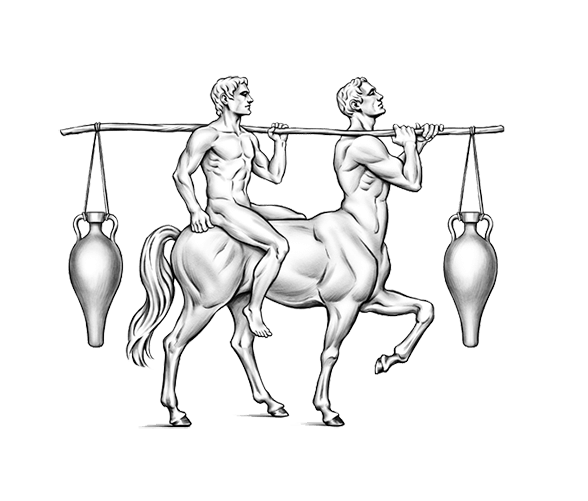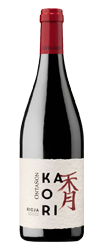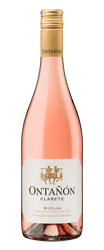Clásicos Collection
Fuimos, somos, seremos
Viura
Meticulous work
with its finest lees
There is something indescribable in the meeting of oak and viura. We rock the finest lees in order to coax out all the nobility from an untamed variety which we love. A wine which has set a trend in Rioja for the balanced way in which it blends the fruit and the barrel.
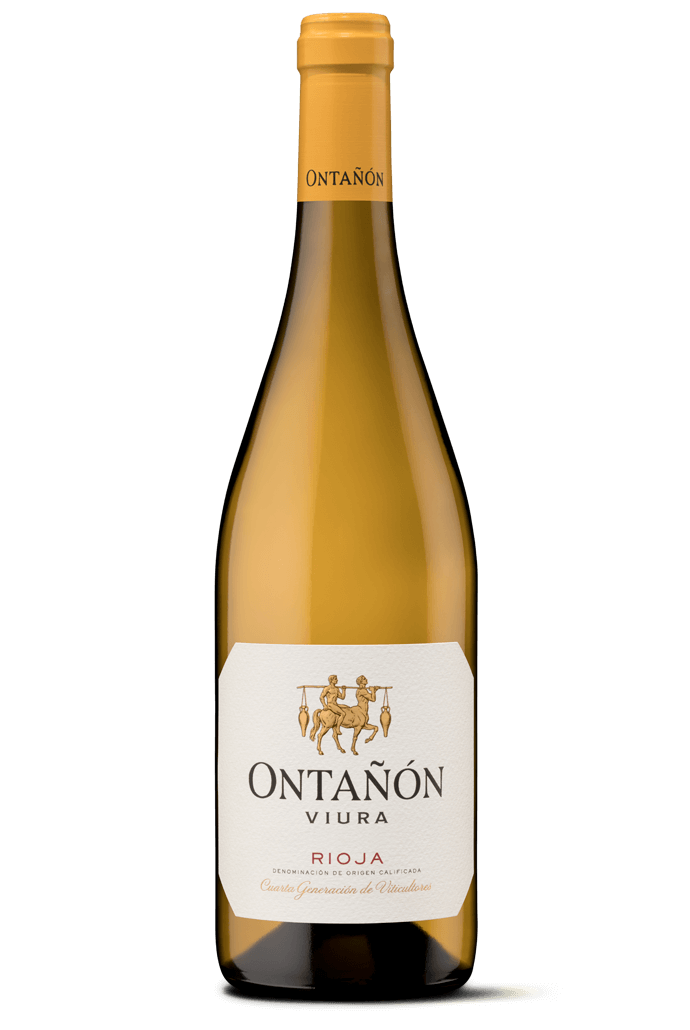
Painstakingly chosen
spots
Viura in contact with oak creates magic. And that exactly sums up our Viura de Ontañón, magic in a bottle thanks to the best grapes from our viura vineyards located in painstakingly chosen spots. The grapes from Alfaro and Ausejo provide us with length on the palate and backbone, and those from Quel, from vineyards at a great height, confer a freshness and surprising acidity. The work with the fine lees in the cask over three months provides the legendary subtlety, that sensation of fragility which makes them so special. A wine which has set a trend in Rioja thanks to the balanced way in which it blends the fruit and the oak in a white wine: the emotion, texture, honesty and elegance of a variety with which we feel a strong bond.
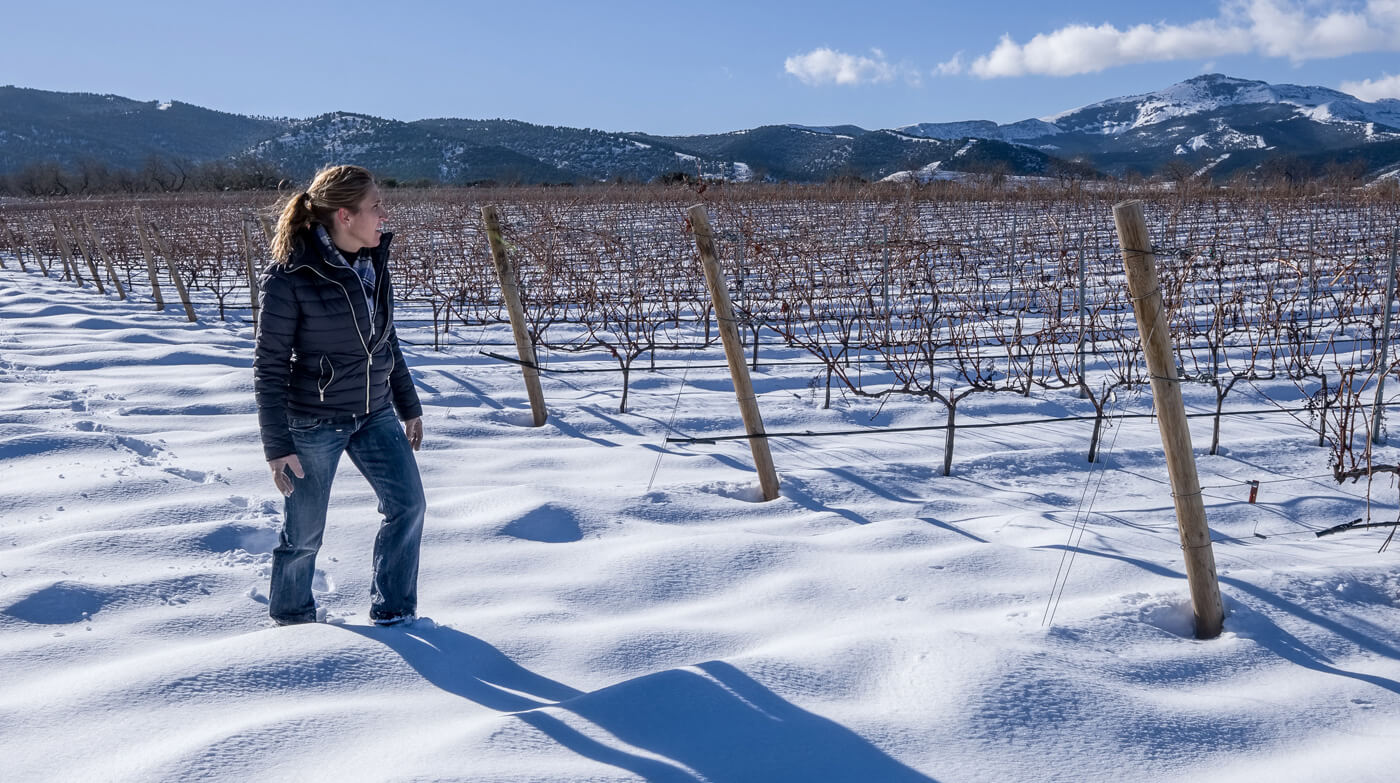
Love of the lees
The first thing that surprises you about Ontañón Viura is its aromas of noble spices, fruit and white blossom. Viura involves slow, harmonious, delicate work, since it is made with its own lees so that the wine also reveals reminders of pastries and has a perfect balance of volume and acidity. The acidity provides the foundation on which the sensations are built, both in the perception of its aromas and on the palate. All its aromatic complexity springs from the conjunction of the climatic features of our terroirs: the influence of the Mediterranean climate with Continental touches, long cold winters and hot, dry summers. And, of course, the altitude, the proverbial altitude of the Sierra de Yerga.
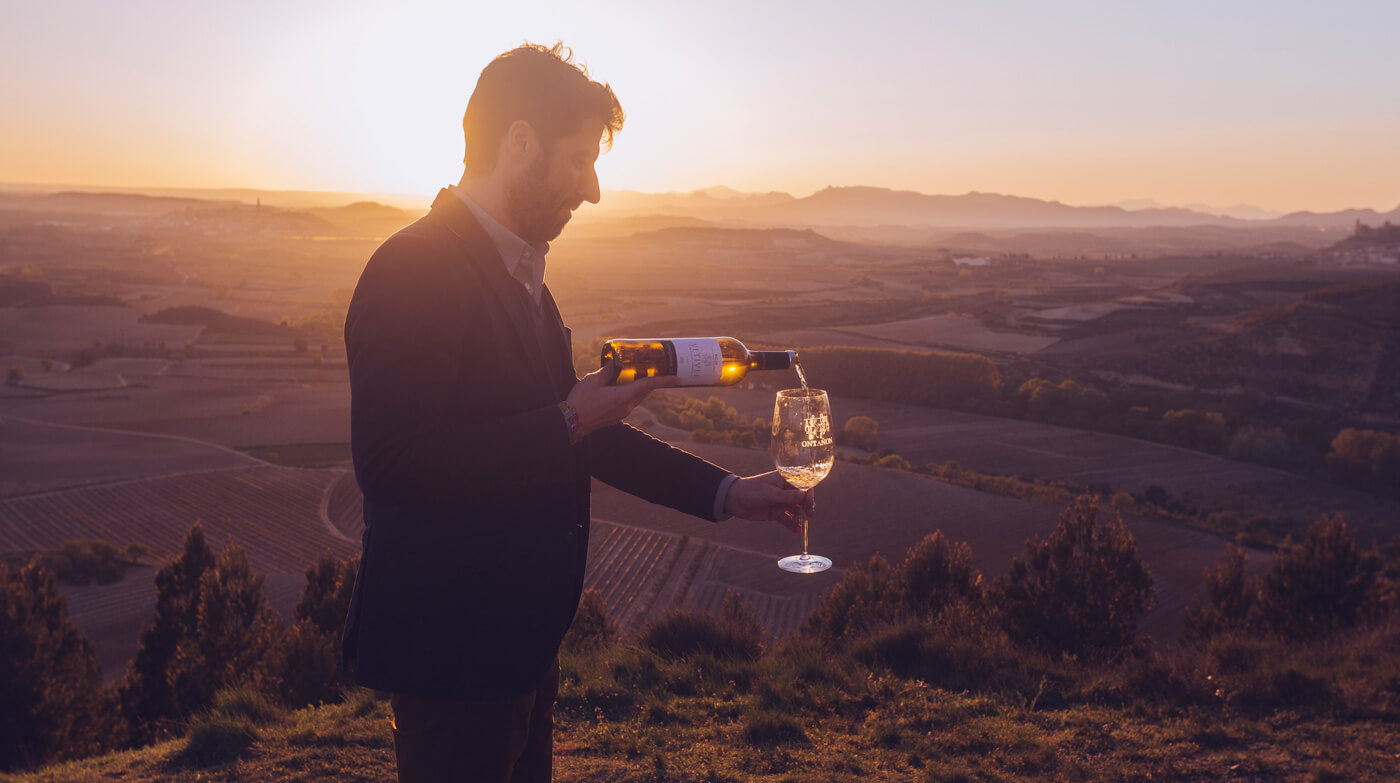
Ontañón Viura expresses the white soul of Rioja Oriental.
Viura,
of uncertain origin
and thrilling
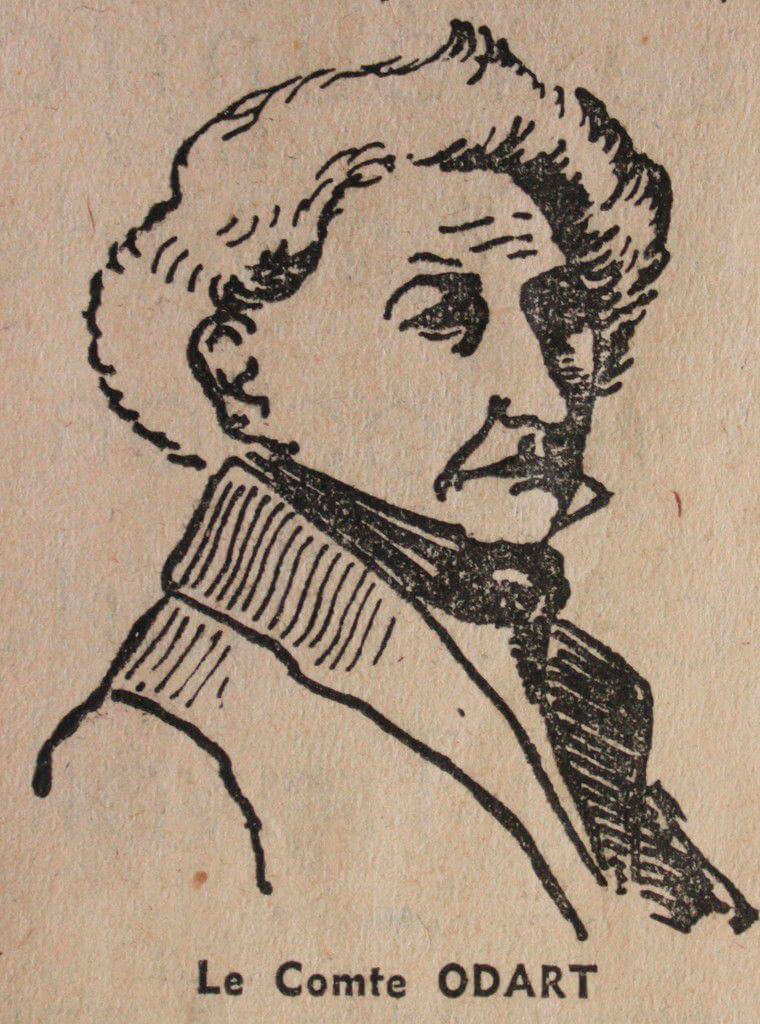
Viura –known in Catalonia and La Mancha as macabeo- is a white grape with a controversial origin. It has been linked to the Camp de Tarragona, but other experts situate it as originally coming from the Aragonese Pyrenees or even from the French side. In the work ‘Ampeología Universal‘, by the French aristocrat, farmer and vine grower, Alexandre Pierre Odart, published in 1859, the provocative theory was suggested that it may have come from Asia Minor. The academic, José Hidalgo, explains that it most likely originates from Spain, from where it spread to the south of France. Manso de Zúñiga went further and argued the case for its Aragonese origin, from the Pyrenean area and therefore not to be found among the early wines of La Rioja, where it seems it only made an appearance well into the 19th century.
Ildefonso Zubía, the first reference in Rioja
In fact, the first reference to viura in Rioja dates from 1847 and bears the signature of Ildefonso Zubía e Icazuriaga, a renowned Logroño botanist, who worked in many fields and published his immortal work ‘Flora de La Rioja‘. There he mentions the presence of the white grape varieties that were cultivated in our region: Muscatel, Uva Pasera, Teta de Vaca or Jaén, Cagazal or Blanco-Rojo, Torrantés, Legeruela, Colgadera, Malvasía, Rivadavia and Viura. The next reference is from 1890 when it appears in the book by Diego Navarro entitled ‘Teoría y práctica de la vinificación’.
Two years later, in 1892, the Estación Enológica research centre was founded in Haro and in 1911, in their annual report, they talk about the varieties being cultivated: “The vidagos or vidueños (vines) which are most widely grown in the region are, among black grapes, Garnacha, Tempranillo and Mazuelo, and among whites, Malvasía, Viura, Calagraño and Muscatel; Miguel de Arco and Monastel, of black grapes, cultivated in the Rioja Baja, which are rare in the Alta, and the white vidagos Maturano and Turruntés, cannot influence the class of wine other than circumstantially, if at all, due to the small number cultivated in comparison with the previously listed vidagos“.
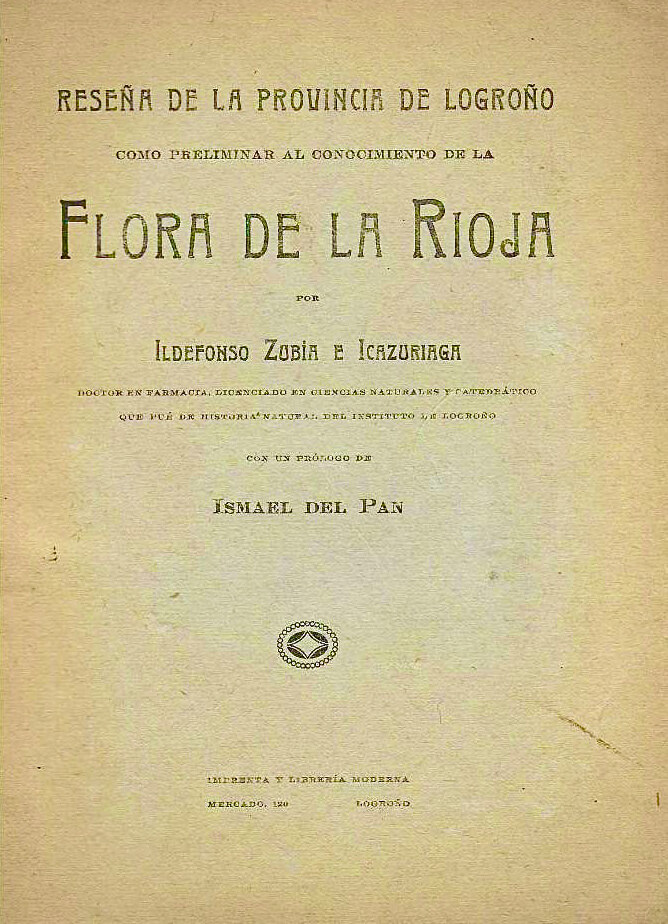
The cover of ‘Flora de La Rioja’, by Ildefonso Zubía Icazuriaga.
Already in 1942, Juan Marcilla Arrazola in his work ‘Viticultura y Enología españolas’ thins down the main varieties cultivated in La Rioja and highlights viura as the most widespread in the region. These days, viura is still the most common white grape in Rioja, with 6.14 % of the total crop area of the DOCa Rioja, which represents around 4,100 hectares.
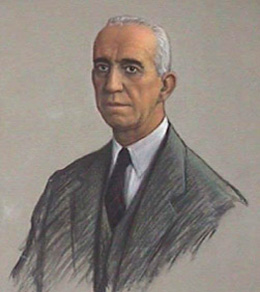
Juan Marzilla Arrazola, agricultural engineer.
An uneasy history
One curious fact that can be mentioned is that in March 1992, the plantation of vines of white varieties was prohibited in Rioja. At that point, there were 8,227 hectares and 90% of this area corresponded to viura, 18.67% of the total area of vines cultivated in the DOCa. Ten years later, as Alberto Pedrajo recalled in an article in the Diario La Rioja, after intense restructuring of the vines, at the end of 2003 the door was once again opened for white varieties to be planted, although viura was excluded. Its plantation was not authorised until 2007, along with other white grapes, to boost the sale of white wines from Rioja.
In many traditional plantations, the viura almost always occupied the top of the vineyards, the higher parts of the terroirs, due to its resistance and rustic quality. In addition, thanks to the great capacity of its wines to resist oxidation, in many vineyards it replaced malvasía and garnacha blanca.
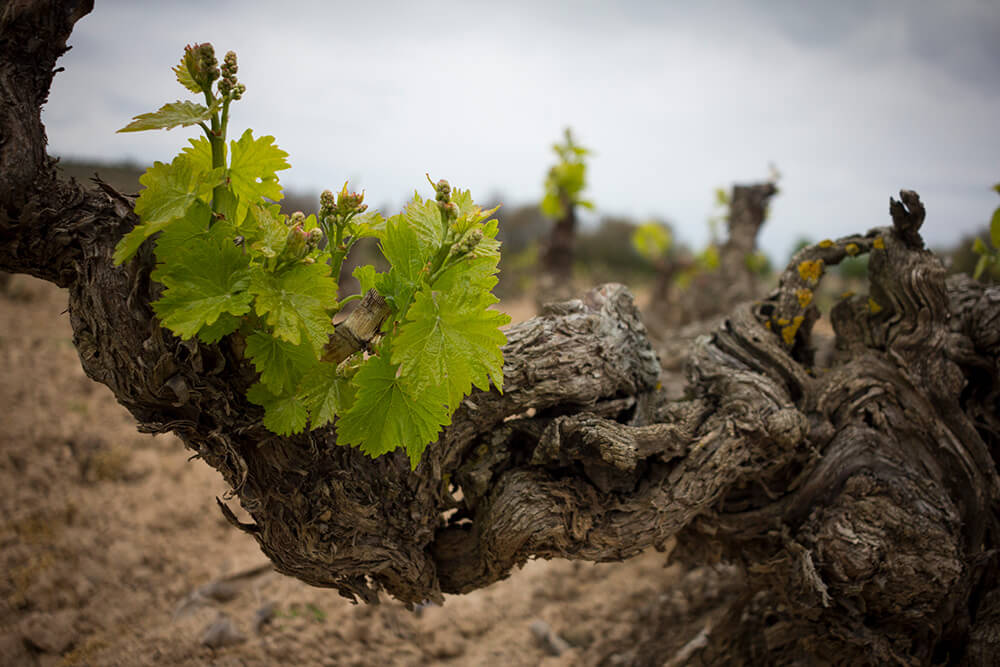
Ontañón viura vineyard in the Sierra de Yerga.
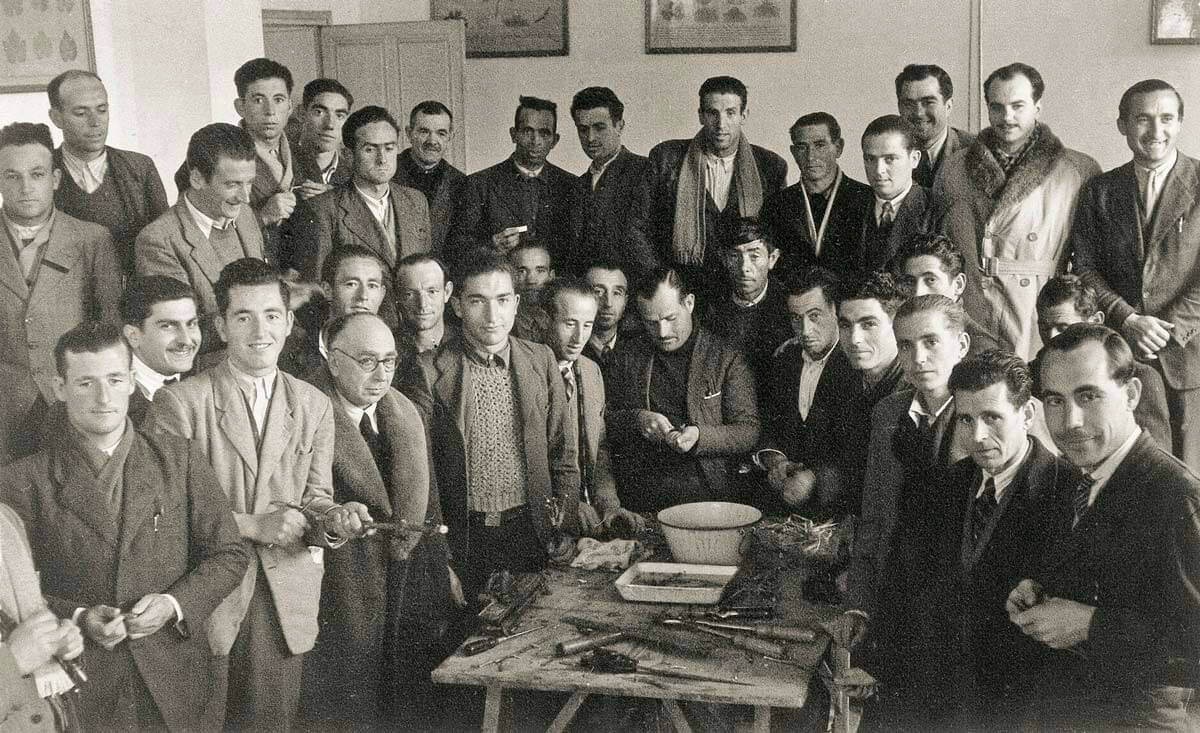
Participants in a grafting course at the Oenological Station in the 1930s.
As José Peñín explains, at the end of the 19th century, just when the first Rioja labels began to appear, the terms ‘Cepa Medoc‘ and ‘Cepa Borgoña‘ were applied to red wines and ‘Cepa Chablis‘ to dry white wines or ‘Cepa Sauternes‘ to sweet whites. The white wines did not promote the character of the variety or the fruit factor, but rather the features produced by cask ageing. They sought to avoid any nuance which would identify them as a young wine. Among whites, the Chablis district represented the French model of a dry taste, light, acidic wines and Sauternes, for the sweet and semi-sweet wines. These wines enjoyed so much success that on the labels of unsweetened white wines it only stated ‘Blanco Seco’ (Dry White) to underline the difference from the proliferation of sweet white wine. Until the start of the Spanish Civil War, continuing with Peñín’s account, the cultivation of white grapes in Rioja was very important due to the greater taste for aged white wines. They even uprooted many hectares of white vines. (viñas blancas).
Our viura, our ‘late aromas’ *Our viura, our ‘late aromas’ *
Ontañón Viura
Viura has always been considered a variety which is too “austere” in its aromas, Nevertheless, the oenologists of Ontañón like them for their subtlety, as opposed to explosiveness, Viura is a synonym for complexity; the beauty of a wine which can offer a wide spectrum of nuances based on various factors: the altitude and very slow ripening of the grapes, fermentation in stainless steel, the work with its finest lees in the cask and finally, a short ageing of four to six months to refine all its aromatic sensations. The journalist Amaya Cervera proposed the division of the varieties into those which offer “early aromas” (aromatic varieties) and “late aromas” (non-aromatic varieties), in which the aromas appear with time. Undoubtedly, viura fits this second definition to perfection, and its moderate aromatic intensity allows it to age and evolve elegantly with time both in the cask and in the bottle. And it is just in that space that the nuances which thrill and excite us make an appearance. Sara Jane Evans says it very clearly: “The emotion of white Rioja comes when it is combined with oak”. In the journal Mi Vino, this is how they define the Ontañón viura wine: “A ripe, fruity profile with a moderate presence of the cask and well integrated. Details of stone fruit with an exotic touch, quince pulp and spices (vanilla, cinnamon). Full and glyceric on the palate, with good acidity to give it a balanced passage and an easy to drink character”
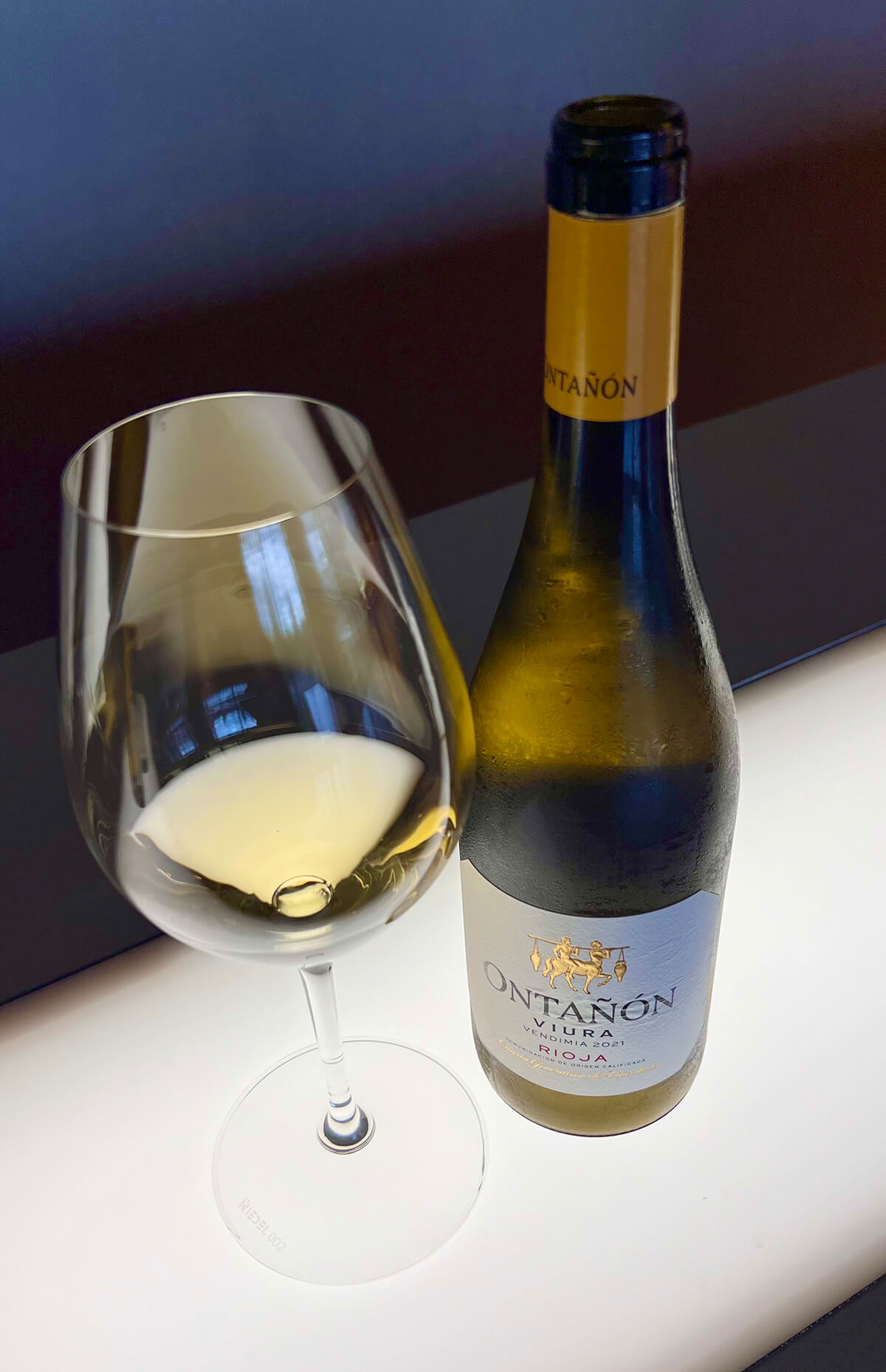
Viticulture
To make this wine we work with the best berries from our viura vines from different zones of Rioja: the Sierra de Yerga, the valley of the Cidacos and carefully chosen plots in Ausejo. Some give us length and structure and those from Quel, freshness and acidity.
Vinification
Tasting
The wine has a subtle floral aroma, Reminders of tropical fruit, grapefruit and a hint of white pepper and toasted oak aromas. Very subtle sensations from the wood.
Oily and meaty mouth-feel. Fine natural acidity and well-balanced potency.
12,5 % Alc. by Vol
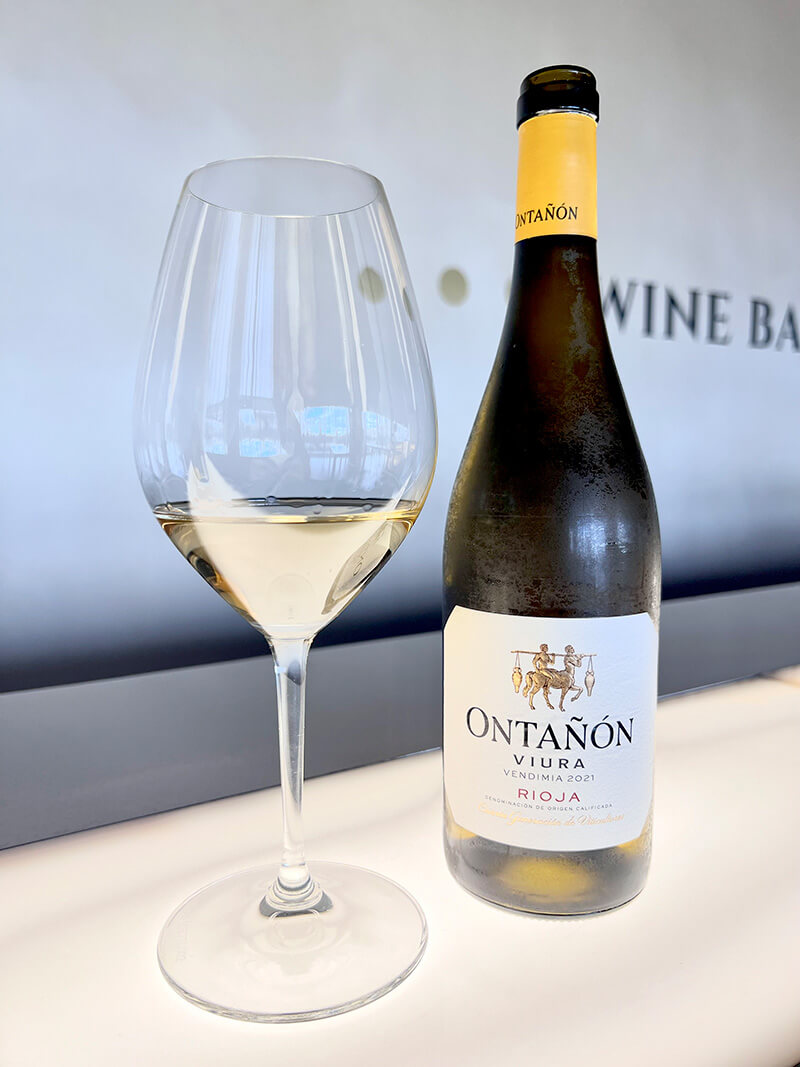
The importance
of being called
Ontañón Viura

Sara Jane Evans
Sara Jane Evans, Master of Wine, and one of the top experts in Spanish wine, said of our viura in ‘Decanter’ that it “expresses different, attractive notes of balsamic herbs and thyme on the nose. A smooth palate and fresh acidity with golden plums, yellow apples and a final touch of lime. The oak gives the wine an attractive sweetness and volume”.

In ‘Wine Spectator’, a specialised publication in the United States, they stress that this “bold white combines expressive flavours with a muscular texture. Notes of pear and quince mingle with brioche, camomile and dry pineapple, with a juicy acidity and light tannins which give the wine backbone”.

In ‘Wine Enthusiast’, also from the United States, in an article by Kelly Magyarics, our viura was highlighted as one of the wines which explains the evolution and future of white wines from the DOCa Rioja.
Download
Tasting Notes 2021
· PDF ·
Image Bottle
· JPG ·
Label
· PDF ·
